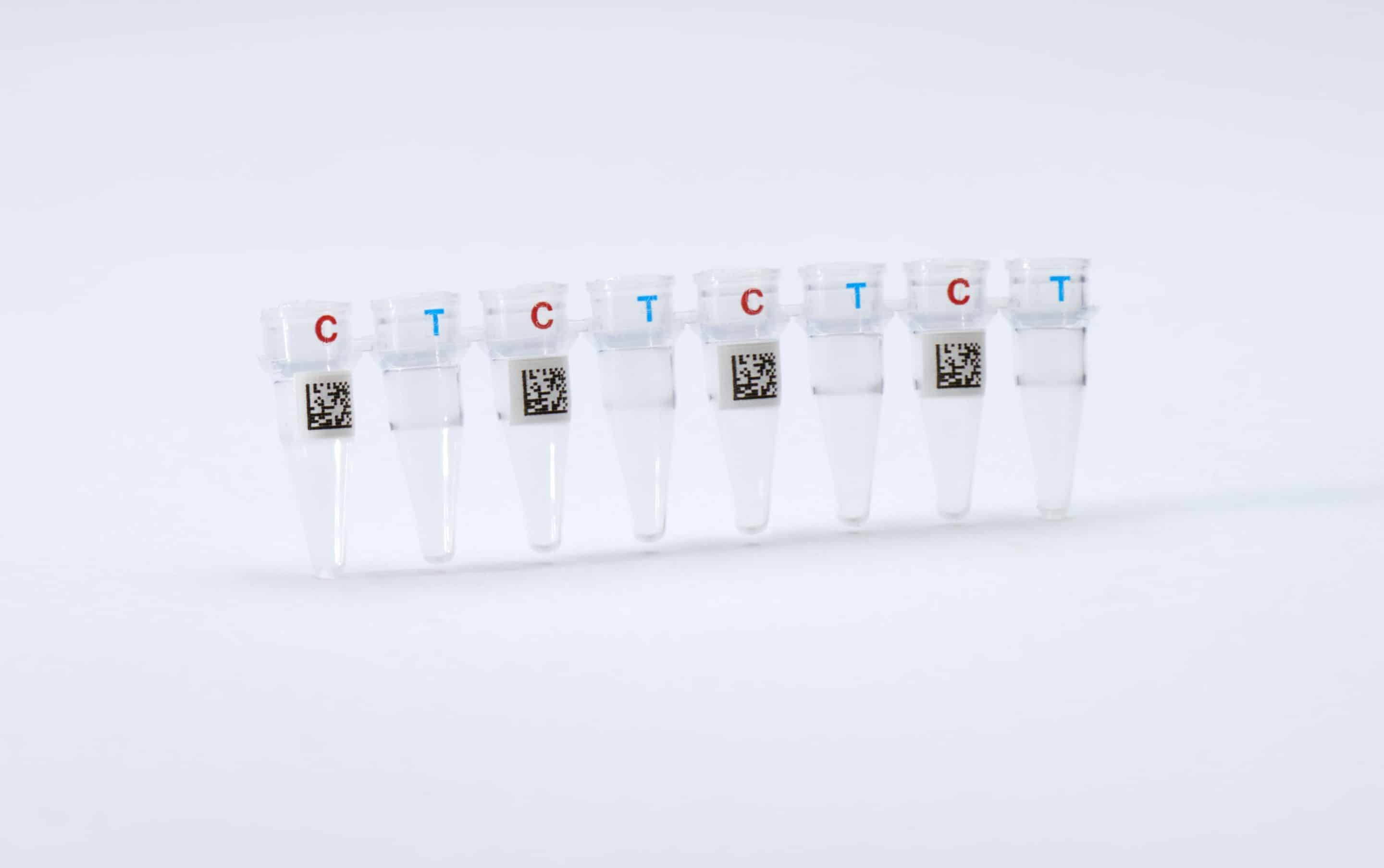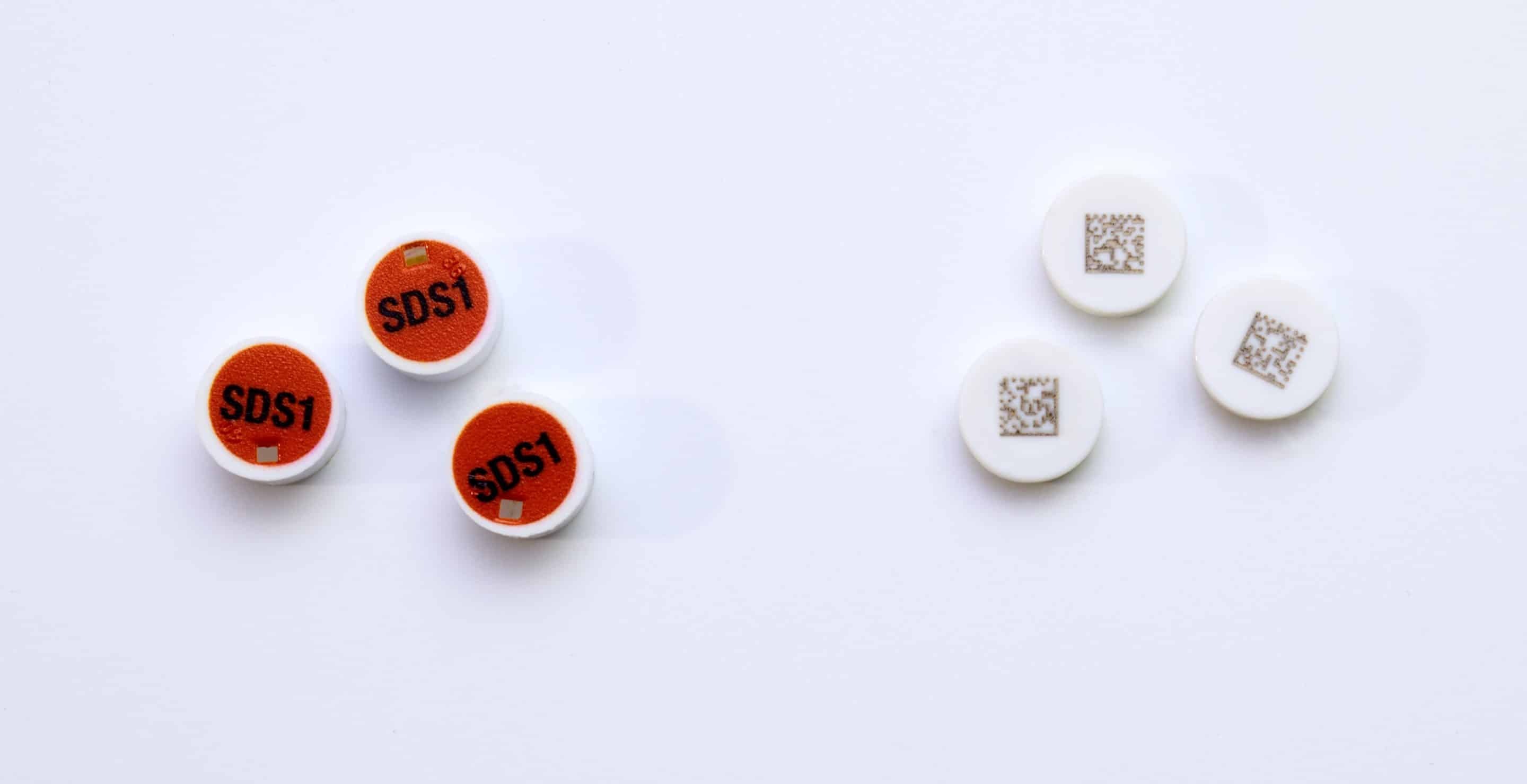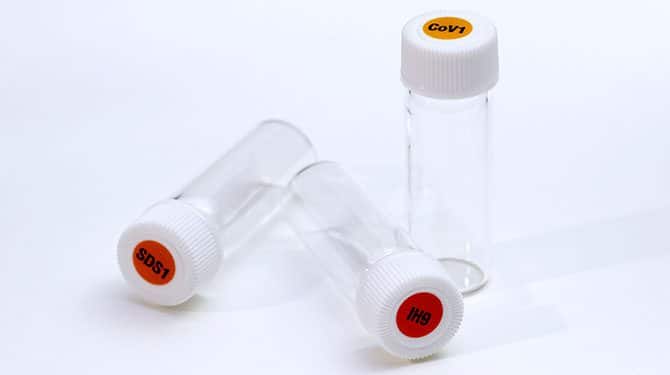When it comes to sample identification in the lab, most often you’ll find labels applied to the sides of tubes and vials—and for good reason. A long and narrow barcode and line of text fit perfectly along the side of most specimen containers. However, there are situations where this traditional approach simply isn’t enough or might not work at all.
The sides of your specimen containers aren’t the only valuable real estate on your sample containers. This list covers just a few of the ways our customers have optimized their tracking and identification strategy by labeling the closures of their specimen containers.
1. Enable easier scanning from above
Sometimes the ability to scan specimens from above is ideal, specifically when samples are stored in racks or being processed through certain types of automation. Including a 2D barcode on the caps of your containers can make it significantly easier to scan from above, reducing manual interference and effort.
Individual specimens can be scanned without being removed from their racks or automated processes, and when it comes to automation specifically, scanners can be more strategically placed throughout workflows to minimize, or completely eliminate manual scan points.
2. Maximize data capacity
It’s possible you may want to include more information on your containers than you have room for on a rectangular side label or have different types of information that become available at different times.
You can easily condense your information by opting for a 2D identification bar code on the closure of your tubes, leaving room on the side for other information like a corresponding bar code, a logo, or detailed human readable information.
A dual label system like this can be particularly useful if you need to include patient or sample information that isn’t available until the time of collection alongside tracking information. In cases like these, you might want to order tubes with 2D identification codes pre-applied to the caps then print and apply sample information to the side as it becomes available.
3. Accommodate odd container shapes
Some sample containers, such as conical tubes, can be tricky to label especially at smaller sizes. While there are suitable labels specifically designed for conical shaped tubes, the curves of these and other more unique labware shapes make labels more prone to lifting.
It’s for this reason we typically recommend using a different marking technology such as Cured Ink or Laser when marking uniquely shaped labware, however many of these options are only available pre-applied to labware, which isn’t always feasible.
If your processes require pressure sensitive labels, applying the label to a flat surface, like the top of a cap is going to reduce the likelihood of label lifting.

4. Expand color coding options
Colored caps are commonly used for color-coding, however, your options are limited to the plastic colors your labware supplier offers, which may not be enough for your ideal color-coding strategy.
If your color-coding strategy is more complicated than can be accomplished with the options your labware supplier offers, it’s worth looking into a color marking strategy. This could mean colored labels or Cured ink applied directly to your caps. An ink-based strategy gives you near limitless color options.
Using colored labels doesn’t necessarily mean giving up the ability to include additional information on your closures either. Human readable information can easily be printed with a colored background. However, if you need a scannable code on your closure, you’ll want a white background to ensure readability. Depending on the size of your container cap you may be able to feature color in the form of a ring surrounding the code or an icon.
How to label specimen closures
You have options when it comes to labeling the closures of your specimens, though, slightly limited when compared to more traditional side labeling.
At this point in time, benchtop specimen container label applicators aren’t equipped to label the caps or bottoms of tubes and vials. So, when it comes to application method, your choices are manual application or pre-applied.
If your sample containers are on the larger side or you’re dealing with small quantities, a manual strategy might be feasible, however we always recommend pre-applied closure labels since they are often quite small and tricky to apply by hand.

Ordering Pre-marked Labware also widens your options when it comes to marking technology, adding Cured Ink and Laser marking to the list alongside standard pressure sensitive labels. Pressure sensitive labels are a reliable choice whether or not you choose to order Pre-barcoded Labware, however if you’re looking for increased durability Cured Ink and Laser marking are both great options, with Cured Ink being a better choice if you want to include color.
As data needs grow and sample sizes shrink in response to industry trends like automation, the cloud and miniaturization continue to thrive, our tracking and identification solutions need to adapt. Labeling your caps is a cost-effective and simple way to address ever-changing specimen tracking needs that is often overlooked.
